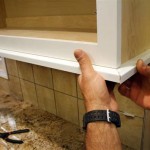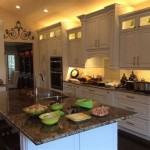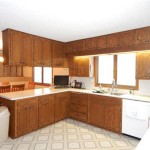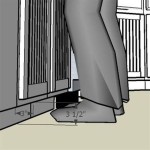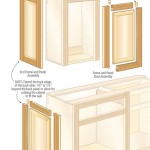A Glimpse into the 1920s Kitchen: A World of Innovation and Efficiency
The 1920s, a decade marked by economic prosperity and social change, brought about a revolution in the American home, including the kitchen. The kitchens of the 1920s transitioned from their utilitarian predecessors into spaces that were both functional and stylish. This shift was driven by several factors, including the rise of new technologies, the influence of evolving social norms, and a growing emphasis on homemaking as a source of pride and satisfaction. Stepping into a 1920s kitchen was a glimpse into a world of innovation, practicality, and a burgeoning sense of modern living.
The Rise of New Appliances
The 1920s witnessed a surge in the development and adoption of new kitchen appliances that promised to make life easier and more efficient. The most notable innovation was the introduction of the electric refrigerator, a revolutionary device that replaced the cumbersome and unreliable icebox. This change ushered in a new era of food storage and preservation, allowing families to enjoy fresh and varied diets.
Another significant advancement was the adoption of the electric stove, which offered greater control and efficiency over traditional gas-powered stoves. Electric ovens and ranges were gradually replacing coal or wood-fired stoves, making cooking more convenient and less labor-intensive. The advent of these electrical appliances also led to the inclusion of electrical wiring and outlets in kitchens, further transforming them into more modern and functional spaces.
The 1920s also saw the rise of other labor-saving appliances, such as the electric mixer and the toaster. These devices helped streamline the process of preparing meals, allowing homemakers more time for leisure and other pursuits. The widespread adoption of these new appliances reflected a growing desire for convenience and efficiency in the kitchen, contributing to the overall modernization of home life.
A Shift in Design and Layout
The 1920s witnessed a decisive shift in kitchen design. Gone were the days of dark and cluttered spaces. Instead, kitchens began to embrace a new aesthetic that emphasized light, efficiency, and cleanliness. The introduction of built-in cabinetry, with its smooth surfaces and organized storage solutions, allowed for efficient use of space and a more streamlined appearance.
The layout of the 1920s kitchen also reflected an emphasis on functionality. The work triangle, a concept that promoted efficiency by organizing the sink, stove, and refrigerator in a triangular pattern, became popular. This layout ensured that movements within the kitchen were minimized, enabling a smoother and more productive cooking experience.
The use of light-colored paint and bright tile backsplashes further contributed to the clean and modern aesthetic of the 1920s kitchen. These elements, coupled with the introduction of windows for natural light, created a more inviting and airy space that was a far cry from earlier kitchens.
Embracing the "Modern" Look
The 1920s kitchen embraced a sense of modernity that extended beyond functionality and design. A growing emphasis on homemaking as a source of pride and fulfillment led to a heightened focus on aesthetics and creating a space that reflected the latest trends. This was evident in the use of stylish kitchenware, such as brightly colored enamelware and Bakelite kitchen utensils, which added a touch of glamour and whimsy to everyday tasks.
The influence of the "Modern" movement in design, characterized by its clean lines and functional forms, also seeped into kitchen decor. This trend manifested in the use of geometric patterns, streamlined furniture, and chrome accents. These elements combined to create a sophisticated and contemporary environment that celebrated both practicality and style.
The 1920s kitchen marked a significant turning point in home design, offering a glimpse into a future of greater efficiency and convenience. The introduction of labor-saving appliances, the emphasis on functionality, and the embrace of modern aesthetics transformed the kitchen from a utilitarian space into a symbol of progress, innovation, and the evolving modern lifestyle of the era.

Vintage Restoration Bringing This 1920s Kitchen S Cha

1920s Kitchen Design At Edmonton Week Jostar Interiors Ltd

How Kitchens Have Changed Over The Years Ream Interiors

Photos Of Old Kitchens From 1860 To 1970 1920s Kitchen Antique

Mcfarland Historical Society 1920 S Kitchen

1920s Classic Kitchen Remodeling

First Friday Feature An Ode To The 1920s Kitchen Style

1920 S 1930 Kitchens Vintage House 1920s Kitchen

The Little Red Chair 1920 S Kitchen Tour

Lillian Gilbreth S Kitchen Practical How It Reinvented The Modern
Related Posts

